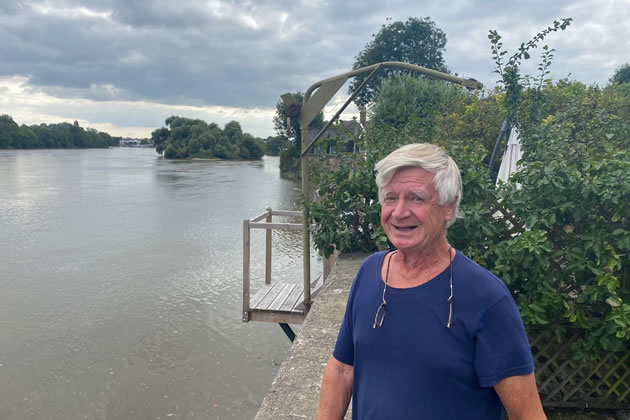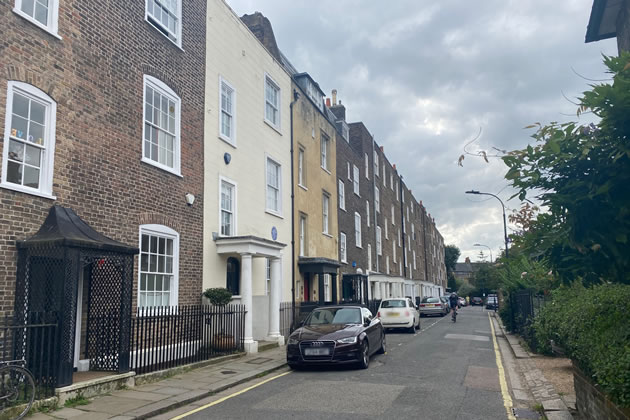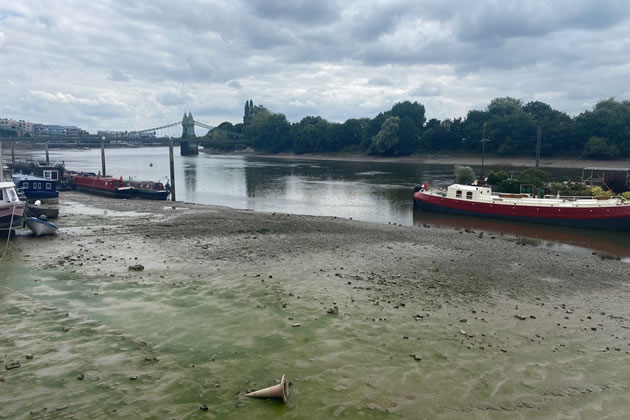Hammersmith Residents Speak of Their Flooding Fears
One couple concerned about daughter moving into their riverside house

Christopher Moore outside his home on Hammersmith Terrace
The Hammersmith street that could be one of the first to disappear under water if global sea levels rise has seen its residents speak out about their fears.
The Thames Barrier is expected to come under increased pressure in future decades and large parts of the city would be flooded were it to fail.
Husband and wife Christopher and Lotte Moore have lived on Hammersmith Terrace, which borders the Thames, for 60 years – it is one of the most flood prone streets in the capital.
Christopher said the older you get the less anxious you are about things.
He said: “Firstly, we’ll be dead and buried. Secondly, they’d work hard to get another barrier.
“It would be enormously expensive but still cheaper than raising the wall all the way along.
“With the barrier that relieves a certain amount of anxiety but if it did overflow our wall there would be a lot of devastation further down and further up.”
Lotte, a writer in her 80s, said she has recently felt frightened of flooding but she would be concerned about their daughter moving into the house in the future.
She said, “Our daughter may have the house and I would be very worried for her because if she moved in and it was all flooded she’d be very sad.”
Lotte claimed the whole terrace flooded in 1928 and housemaids were rumoured to have drowned in the basement but since living in the house, the couple have not experienced flooding.

Hammersmith Terrace
Christopher said part of their garden wall fell into the river and in 1955 and the tide rose to the top of the wall.
He said the area is generally quite flat and so if properties on the river bank flooded, the water could reach as far as Acton.
He added that Chiswick Mall, a nearby street which runs right along the river, has always flooded during high spring tides and he would row down the route as a child.

The Thames foreshore at Hammersmith
Hammersmith residents Ben and Matt live near Stamford Brook and have often seen streets along the Thames pooling with water.
Matt said the gardens of people who live right next to the river are constantly flooded and Ben has seen water levels reach waist height on occasion.
Ben said, “We use far too much water and waste too much food.
“The government could do so much more to help climate change but at the end of the day it’s not just down to governments it’s the businesses they work with.
“There are other solutions as well like small wind turbines that can be put onto houses.
“We’re using out-dated ways of getting energy, we’ve been using coal since the last like 200 years, surely we can move to something else like water turbines.”
Matt said big businesses should use less single-use plastic packaging and eating less meat could also help.
Climate science experts Climate Central predict most areas along the Thames will be at risk of regular flooding within 10 years.
They predict parts of West London will be among the worst affected areas, including Hammersmith, Baron’s Court, and Fulham.
Hammersmith and Fulham Council declared a climate and ecological emergency in 2019 and has set a target to reach net zero emissions across the borough by 2030.
A council spokesperson previously told the Local Democracy Reporting Service, “Although the borough is low-lying and projected to be below annual river flood levels, the Thames Barrier and river wall currently protect London and the borough from river flooding.”
Hannah Neary - Local Democracy Reporter
August 31, 2021